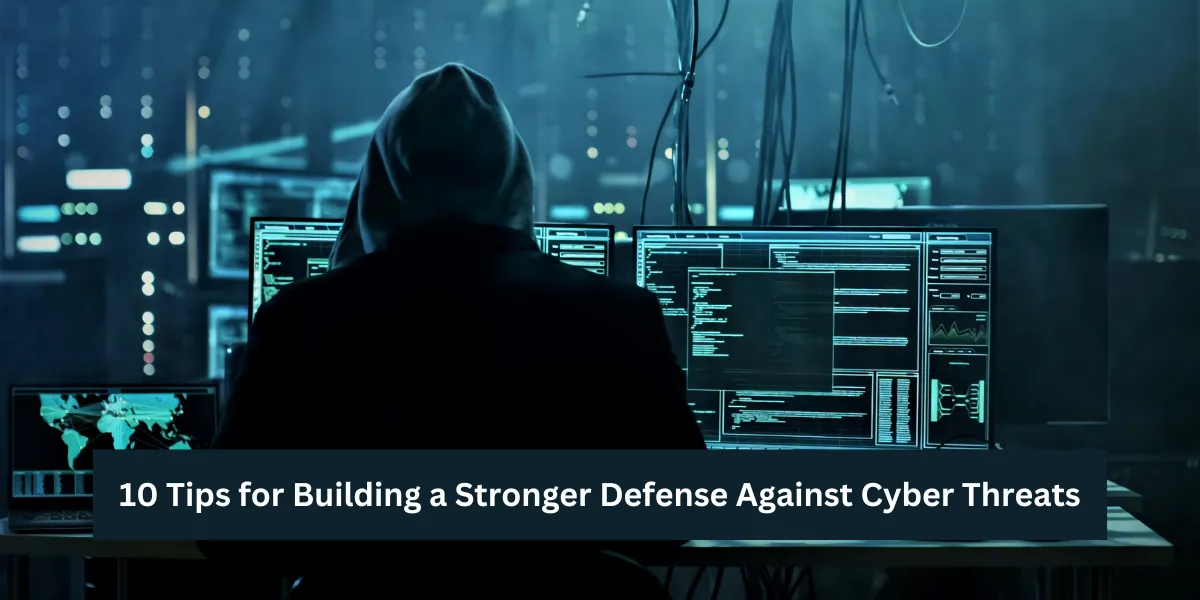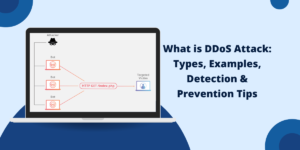In today’s technology-driven world, security threats are a growing concern for organizations and individuals alike. Attacks targeting sensitive information, financial systems, and critical infrastructure are becoming more frequent and sophisticated. This makes protecting your digital environment more essential than ever.
Businesses, in particular, face unique challenges in defending their systems and data. Without proper precautions, they risk financial losses, legal repercussions, and damage to their reputation. To stay ahead of these risks, it’s crucial to implement strong defensive measures that can safeguard against evolving threats.
Top 10 Tips for Building a Stronger Defense Against Cyber Threats
Here are key tips to help strengthen your defenses.
- Regularly Update and Patch Software
- Protect Sensitive Data
- Train Employees on Security Best Practices
- Use Multi-Factor Authentication (MFA)
- Monitor Network Traffic for Unusual Activity
- Backup Data Regularly and Securely
- Limit User Access to Critical Systems
- Conduct Regular Security Audits
- Implement Endpoint Security Solutions
- Develop a Robust Incident Response Plan
1. Regularly Update and Patch Software
One of the simplest yet most effective ways to protect systems is by keeping software up to date. Attackers often exploit known vulnerabilities in outdated applications and operating systems to gain unauthorized access. Regularly applying updates and patches ensures these vulnerabilities are addressed, reducing the likelihood of a breach. Automating the update process wherever possible can help ensure that critical systems remain secure without unnecessary delays.
2. Protect Sensitive Data
Data is one of the most valuable assets for any organization, and protecting it should be a top priority. Implementing strong access controls, encrypting sensitive information, and regularly monitoring for unauthorized activity are essential steps. These measures ensure that critical data remains safe even if other defenses are breached.
For instance, to address the rising concern of cyber attacks in healthcare, organizations in the sector must adopt tailored strategies for safeguarding patient information. Encrypting medical records, ensuring compliance with privacy regulations, and training staff on secure data handling practices can significantly reduce risks. These steps are vital for protecting sensitive data from theft or misuse. Data safety and recovery solutions like the ones by Semperis ensure that your sensitive data stays well-protected against cyber threats.
3. Train Employees on Security Best Practices
Many breaches occur due to human error, making employee training an essential component of any defense strategy. Regularly educating staff on recognizing phishing emails, creating strong passwords, and securely handling sensitive information can reduce the risk of accidental exposure. Providing real-world scenarios during training sessions can help employees better understand potential threats and respond effectively. A well-informed team serves as the first line of defense.
4. Use Multi-Factor Authentication (MFA)
Adding an extra layer of protection through multi-factor authentication (MFA) can prevent unauthorized access to accounts and systems. MFA requires users to provide two or more verification factors, such as a password and a one-time code sent to a mobile device. This makes it significantly harder for attackers to gain access, even if they have stolen a password. Organizations can reduce vulnerabilities and enhance overall security by implementing MFA across all critical accounts.
5. Monitor Network Traffic for Unusual Activity
Proactively monitoring network activity is crucial for identifying potential threats before they cause significant damage. Using tools like intrusion detection systems (IDS) and intrusion prevention systems (IPS), organizations can track unusual patterns, such as repeated login attempts or unauthorized data transfers. Promptly addressing these anomalies helps minimize risks and prevents breaches from escalating. Regularly reviewing logs and reports ensures that threats are identified and mitigated quickly.
6. Backup Data Regularly and Securely
Backing up your data is critical in safeguarding against data loss caused by hardware failure, accidental deletion, or malicious attacks. Regular backups ensure that even if your systems are compromised, you can restore your information quickly and with minimal disruption. It’s important to store backups securely, using encryption and keeping copies in separate locations, such as an offline or cloud-based repository. Having reliable backups can maintain business continuity and protect sensitive data from being permanently lost.
7. Limit User Access to Critical Systems
Controlling who has access to your systems and data is fundamental to reducing risks. The principle of least privilege ensures that users are granted only the access necessary to perform their roles. This approach minimizes the chances of internal errors or unauthorized activities. Administrators should regularly review access permissions to remove outdated or unnecessary accounts. Implementing robust access controls helps prevent misuse and protects your systems from insider threats and external attacks.
8. Conduct Regular Security Audits
Regular security audits help identify vulnerabilities in your systems and processes before they can be exploited. Audits can uncover outdated software, weak passwords, and misconfigured settings that expose you to potential attacks. Engaging third-party security experts for an unbiased assessment of your defenses is beneficial. These professionals can provide actionable insights and recommend solutions tailored to your specific needs. Conducting audits at least annually ensures that your security measures remain effective against emerging threats.
9. Implement Endpoint Security Solutions
Endpoint devices, such as laptops, smartphones, and tablets, are common targets for attackers. Implementing endpoint security solutions, like antivirus software, firewalls, and device encryption, protects these devices against unauthorized access. Organizations should also enforce policies for secure device usage, such as requiring regular updates and strong passwords. Ensuring a secure connection through virtual private networks (VPNs) for devices used remotely can further protect sensitive information.
10. Develop a Robust Incident Response Plan
Despite the best preventive measures, breaches can still occur, making it essential to have a well-defined incident response plan. This plan should outline clear steps for identifying, containing, and mitigating the effects of an attack. Key components include assigning roles and responsibilities, setting communication protocols, and detailing recovery strategies. Regularly testing the plan through simulations ensures that your team is prepared to act swiftly and effectively when faced with a real threat.
Final Words
Building a strong defense against security threats requires a combination of proactive measures and continuous improvement. Each step contributes to a more secure digital environment. These strategies protect sensitive information and ensure business continuity and customer trust. Organizations must stay vigilant as threats evolve, prioritizing their defenses to stay one step ahead. By implementing the tips outlined in this article, you can create a comprehensive strategy to mitigate risks and safeguard your operations. Security is an ongoing effort; consistent attention to best practices is key to long-term success.

Priya Mervana
 Verified Web Security Experts
Verified Web Security Experts
Priya Mervana is working at SSLInsights.com as a web security expert with over 10 years of experience writing about encryption, SSL certificates, and online privacy. She aims to make complex security topics easily understandable for everyday internet users.



